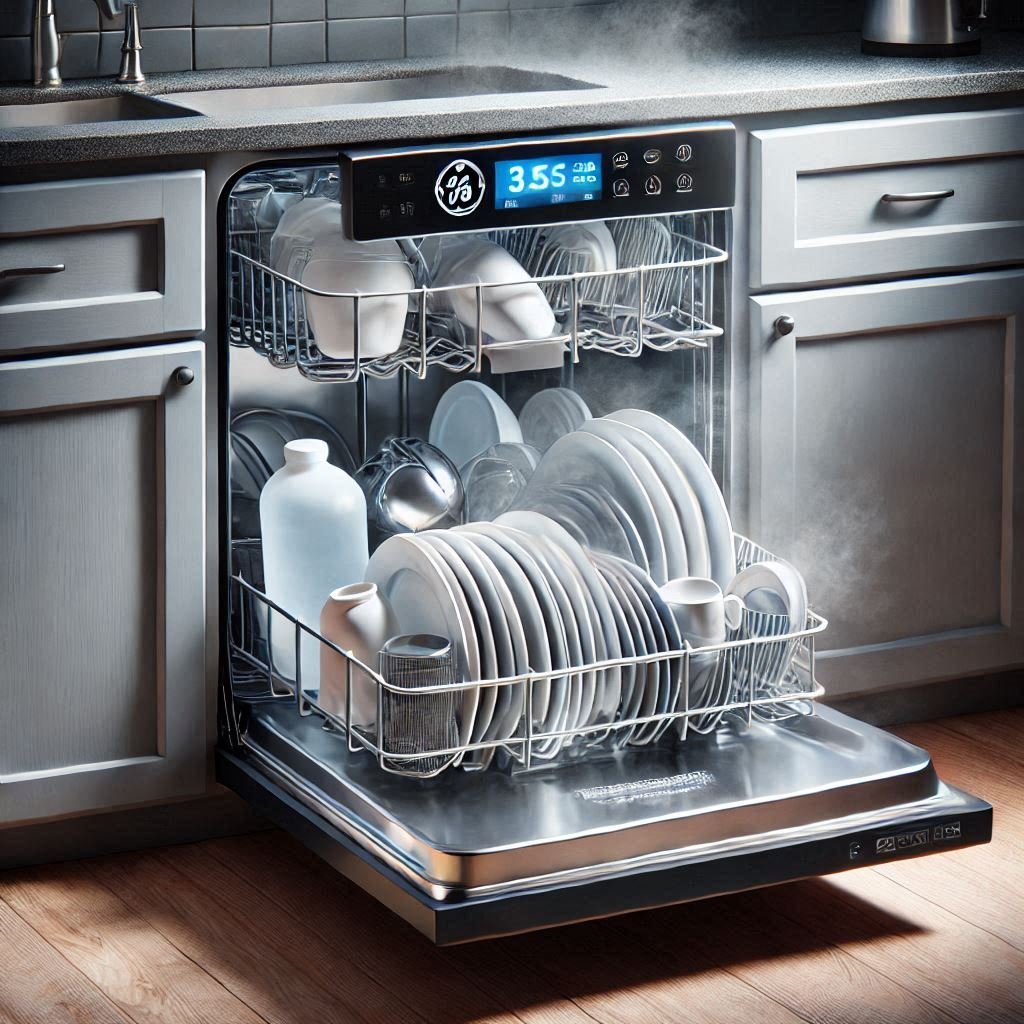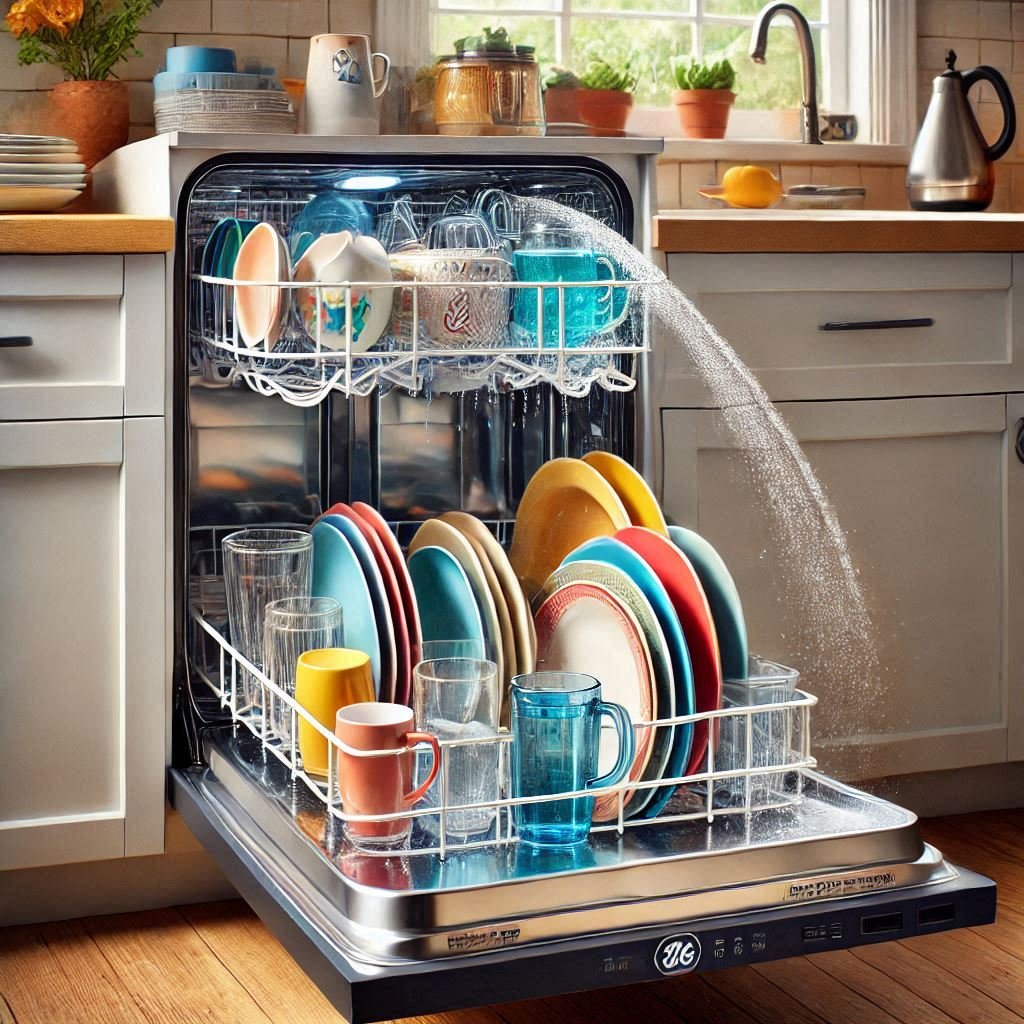When your GE dishwasher is not draining water, it can be incredibly frustrating. You’ve just finished a delicious meal, and the last thing you want is to discover a pool of dirty water sitting at the bottom of your dishwasher. If you’re dealing with this issue, don’t worry—you’re not alone.
Many people experience this problem, and there are several common solutions you can try before calling a professional. In this article, I’ll walk you through some of the most effective ways to fix a GE dishwasher that’s not draining water. From simple checks to more detailed troubleshooting steps, I’ve got you covered.

Table of Contents
Common Causes of GE Dishwasher Not Draining Water
Before diving into the solutions, it’s important to understand why your dishwasher might not be draining water. Here are some common causes:
- Clogged Drain Hose: Food particles, grease, and debris can clog the drain hose, preventing water from draining properly.
- Blocked Air Gap: The air gap prevents water from siphoning back into the dishwasher. If it’s blocked, it can cause drainage issues.
- Faulty Drain Pump: The drain pump is responsible for pushing water out of the dishwasher. If it’s malfunctioning, water won’t drain.
- Jammed Garbage Disposal: If your dishwasher is connected to a garbage disposal, a jammed disposal can prevent water from draining.
- Dirty Filter: A dirty or clogged filter can restrict water flow and cause drainage problems.
Step-by-Step Fixing Guide
Now that you know some potential causes, let’s go through the steps to fix your GE dishwasher not draining water.
Step 1: Check and Clean the Filter
The filter is located at the bottom of your dishwasher. Here’s how to clean it:
- Turn off the dishwasher and unplug it from the power source.
- Remove the bottom rack to access the filter.
- Twist the filter counterclockwise and lift it out.
- Rinse the filter under running water to remove any debris.
- Reinstall the filter by twisting it back into place.
Step 2: Inspect the Drain Hose
The drain hose can easily become clogged with food particles and grease. To inspect and clean it:
- Locate the drain hose at the back of the dishwasher.
- Disconnect the hose from the sink or garbage disposal.
- Check for any visible blockages and remove them.
- Use a long brush to clean the inside of the hose thoroughly.
- Reconnect the hose and ensure it’s securely attached.
Step 3: Clear the Air Gap
If your dishwasher has an air gap, it’s essential to keep it clear:
- Locate the air gap on your sink, usually near the faucet.
- Remove the cover of the air gap.
- Check for any blockages and clear them out.
- Rinse the cover and reattach it.
Step 4: Check the Garbage Disposal
If your dishwasher is connected to a garbage disposal, ensure it’s not jammed:
- Turn off the garbage disposal and unplug it.
- Use a flashlight to look inside the disposal for any blockages.
- Use a wrench to manually rotate the disposal blades and clear any jams.
- Plug the disposal back in and test it.
Step 5: Inspect the Drain Pump
If none of the above steps fix the issue, the drain pump might be the culprit:
- Turn off the dishwasher and unplug it.
- Remove the bottom panel of the dishwasher to access the drain pump.
- Inspect the pump for any visible damage or blockages.
- Use a multimeter to test the pump’s continuity. If it’s faulty, it will need to be replaced.
- Reinstall the bottom panel and plug the dishwasher back in.
How to Diagnose a Faulty Drain Pump
A drain pump can fail for various reasons, such as a mechanical fault, electrical issue, or foreign objects stuck in the pump. Here are detailed steps to diagnose a faulty drain pump:
- Listen for Unusual Sounds: When the dishwasher should be draining, listen for unusual sounds like humming or grinding, which can indicate a problem with the drain pump.
- Check for Water Leakage: Inspect around the bottom of the dishwasher for any signs of water leakage, which could suggest a problem with the pump.
- Perform a Continuity Test: Use a multimeter to check the pump for electrical continuity. If there’s no continuity, the pump is likely faulty and needs replacing.
Advanced Troubleshooting Techniques
For those who are comfortable with more advanced troubleshooting, here are some additional techniques:
Step 1: Check the Dishwasher’s Float Switch
The float switch regulates the water level inside the dishwasher. If it’s stuck or faulty, it can prevent the dishwasher from draining:
- Locate the float switch (usually a plastic cylinder or disc at the bottom of the dishwasher).
- Ensure the float can move freely up and down.
- Clean the float switch and remove any debris that might be causing it to stick.
- Test the float switch with a multimeter to ensure it’s functioning correctly.
Step 2: Inspect the Check Valve
The check valve prevents backflow of water into the dishwasher. If it’s stuck or broken, it can cause drainage issues:
- Locate the check valve in the drain line or near the drain pump.
- Inspect the valve for any debris or blockages.
- Clean or replace the check valve if necessary.
Preventative Measures
To avoid future drainage issues, follow these preventative measures:
- Regularly clean the filter to prevent clogs.
- Rinse dishes before loading them to reduce food debris.
- Run the garbage disposal before starting the dishwasher.
- Use a dishwasher cleaner periodically to maintain the system.
- Avoid overloading the dishwasher to ensure all components function properly.
Frequently Asked Questions (FAQ)
Q: What should I do if my GE dishwasher still isn’t draining after trying these steps?
A: If you’ve followed all the troubleshooting steps and your GE dishwasher is still not draining water, it’s time to call a professional technician. There might be a more complex issue that requires specialized tools and expertise to fix.
Q: Can using the wrong detergent cause drainage issues?
A: Yes, using the wrong type or too much detergent can cause excessive suds, which can interfere with proper drainage. Always use the recommended detergent for your dishwasher.
Q: How often should I clean the dishwasher filter?
A: It’s recommended to clean the dishwasher filter at least once a month, or more frequently if you use your dishwasher heavily or do not rinse dishes before loading them.
Q: Can a dishwasher not draining affect other kitchen plumbing?
A: Yes, a dishwasher that isn’t draining properly can cause backup and plumbing issues in the kitchen sink. Addressing the problem promptly can help prevent more extensive plumbing repairs.
Bottom Line
Fixing a GE dishwasher not draining water can seem difficult, but with the right steps, you can solve the issue without calling a professional. Start by checking and cleaning the filter, inspecting the drain hose, and clearing the air gap. Don’t forget to check the garbage




Leave a Reply